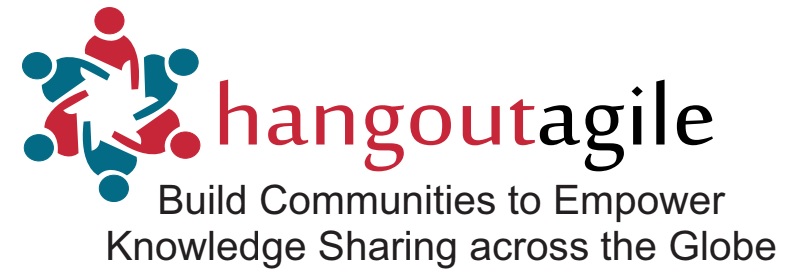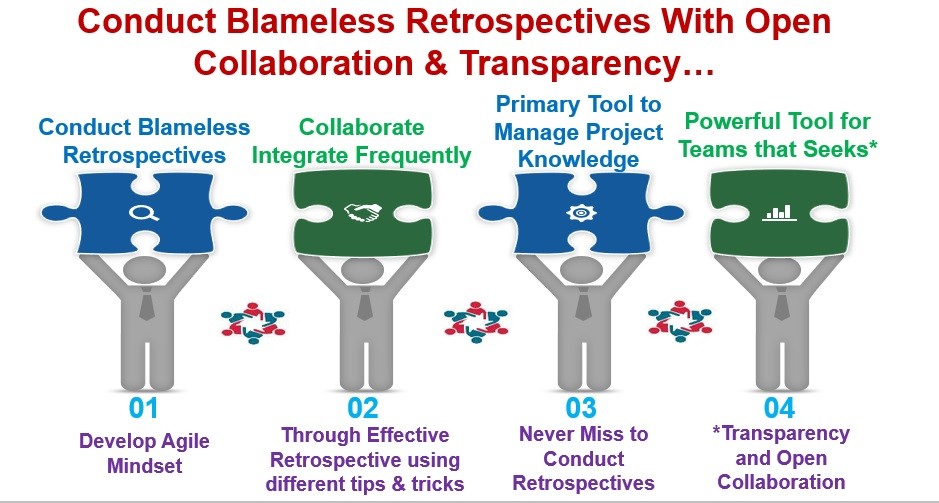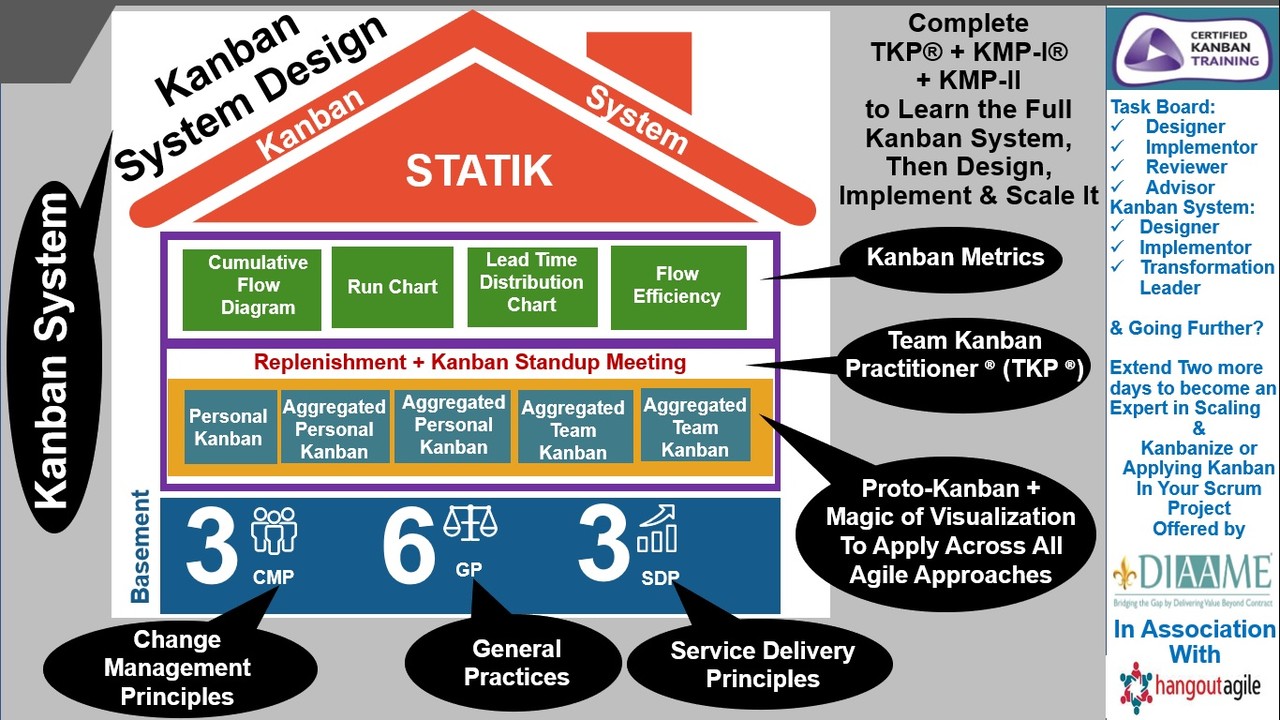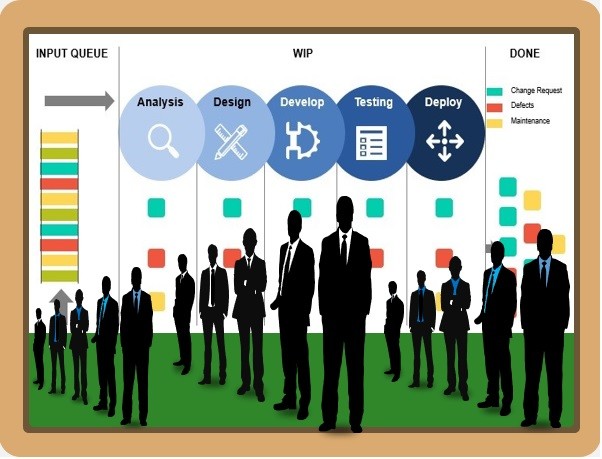Agile Manifesto Value & Principles Embraces Retrospectives? Isn’t It?
Agile Manifesto Value behind Retrospectives is:
Responding to Change Over Following a Plan
To navigate changes, Agile methods call for frequent quality & review Steps built-in throughout the project rather than toward the end of the project.
Recurring Retrospectives regularly check on the effectiveness of the quality processes. They look for the root cause of issues then suggest trials of new approaches improve quality. Subsequent Retrospectives evaluate any trial processes to determine if they are working and should be continued or new adjusting or should be dropped from use.
To facilitate frequent, incremental delivery, agile methods focus on small batches of work incorporating as many elements of project deliverable’s as possible. Small batch systems aim to uncover inconsistencies and quality issues earlier in the project when the overall cost of changes are lower.
Agile Principles behind Retrospectives are:
Build projects around motivated individuals, Give them the Environment& Support they Need, Trust them to get the Job done
At Regular Intervals, the team reflects onhow to become more effective, then fine tune and adjusts its behavior accordingly
Key Points – Food for Thought
Retrospectives are a great platform to identify risks. You can use this platform to do the risk identification, analysis, monitoring & impact planning
Retrospectives can be used for recording threats and opportunities that may impact quality requirements.
99% of Agile Projects have recurring retrospective sessions.
A part of Retrospectives can be used as Risk Brainstorming Activity. This can add value if you include this part at the Project Beginning (on the First or Second Sprint) and Before Major Releases.
Retrospectives are a Collective Thinking Activity to develop the Team Criticism, Awareness, and Responsiveness for Possible Challenges ahead of us.
A retrospective is a part of the Control Quality Process.
Retrospectives/Lessons Learned can be used by the Project Team to discuss Successful Elements in the Project/phase.
Retrospectives/Lessons Learned can be used by the Project Team to discuss What Could be Improved?
Retrospectives/Lessons Learned can be used by the Project Team to discuss what to incorporate in the Ongoing Project, Future Projects & What to add to the Organization Process Assets.
Retrospectives are the Primary Tool to Manage Project Knowledge and Develop the Team through Discussions of what is working well & team-based problem-solving.
Retrospectives are the Most critical practice. Because it allows the team to Learn, Improve, and Adapt its Process.
Retrospectives help the team Learn about its Previous Work on the Product and its Process.
Do You Think Retrospectives Mitigate the Risk of Losing Product Knowledge?
Many of the Organizations, They choose to implement projects primarily through vendors. Although Project goals may be Clear, Vendors have a responsibility to look after their financial viability.
Moreover, once Vendors Complete their obligations and leave the engagement, the Associated Project Knowledgegoes with them, this limits the internal competencies needed for sustained flexibility and speed.
Retrospectives and follow up on possible improvement areas when the vendor is still engaged can help mitigate the loss of product knowledge.
Tips & Tricks for Effective Retrospectives
1. Encouraging Team Members to Take Collective Responsibility for team priorities.
2. Productive conversations about the Work are a must-have. They help the team discover bottlenecks, resolve issues, focus on flow, and continuously improve their process.
3. Retrospectives should be held regularly, whether weekly, bimonthly, or monthly. They give the team a focused opportunity to evaluate the health of the system, make adjustments, and devise experiments.
4. When Implemented Effectively, Retrospectives are potent tools for teams that seek transparency and open collaboration.
5. Without targeted discussion, Retrospectives can turn into personnel critiques. So always ensure that you have done all the necessary groundwork to spread the culture of continuous improvement.
6. The Agile Mindset plays a vital role in Making Your Retrospectives effective. That makes the team entirely focused on the work and the process while laying the groundwork for a team culture of continuous improvement.
7. To Make Your Retrospectives more effective, At the end of every week, gather around the board to evaluate your System. Observe the flow of work and add a new question each week.
8. If the Retrospective Frequency is Weekly, In Your First Week’s Retrospectives:
- The best approach is to find out the hidden work in process that we haven’t gotten onto the board yet?
- Because Searching for hidden work in process will be an ongoing theme for your first few weeks.
- It’s not always evident and can take time to reveal itself. As you find it, add it to the board.
9. Starting from Retrospectives Week-2, You can begin identifying any impediments to the flow of work?
- Look at where work is piling up on the board
- Where the action is getting blocked, or parts of the workflow that may be “starved” for something to work on.
- Discuss & Explore how the process or the team’s policies could be modified to remove impediments to flow.
- Even after you finish these exercises, ask these questions during every retrospective.
10. Starting from Retrospectives Week-3, You can begin to have in-depth discussions about tracking. It is important to seek an answer for the below question:
Are We Tracking things at the right level of granularity?
- If some of the work items are so big that it will take months to move across the board, break them down into cards you can complete in a few days or weeks.
- If your board is littered with very small tasks, consider using task lists associated with the card instead of a card for every small task that must be done in a day.
11. Starting from Retrospectives Week-4, Usually A queue or buffer happens when work is in a holding pattern before it goes to the next step. Let us deep dive through powerful questioning:
- Are there any queues or buffers in your workflow that are not represented on the board?
- If the answer is Yes, add lanes into your process to represent these queues. Managing the size of queues in your system is a key success factor to improve the flow of work.
- Identifying queues will be an ongoing activity, So this would be a Continuous Journey.
- It is important to pay special attention to the start and end states by asking the below questions:
Where does the work for this team originate?
What is the source of demand?
- If you find that you have two teams working towards separate goals, and those teams’ work rarely intersects, you may have more than one process.
- Try to reserve one board for each process or add a swim-lane to your task board to show there are parallel processes at work.
12. It is always good to see your work as a system, rather than a collection of individual tasks.
13. Effective Retrospectives empower team members and managers alike to observe the flow, resolve issues, and run experiments helping everyone stay more engaged and support a culture of continuous improvement.
Closing Thoughts
Whatever we discussed here are the Key Points or Food For Thought, Tips & Tricks which can be used in general with any of Support. Development Project & Product Development across different Agile Approaches. If you are curious to dig in further, please feel free to join any of my Agile, Lean & Kanban Training & Certification Program.
Please feel free to share your views as comments. You can write to me sharing your thoughts through dileepav@hangoutagile.com.
You could also view & read my other Articles in https://www.hangoutagile.com/blog
You can also Join our Whats-app & LinkedIn Group (+91 702 538 1111-HangoutAgile Community) specifically to discuss more on this.
Are you Playing the Role of an Agile Coach or Interacting with Scrum Masters, Product Owners, Product Managers, Project Managers, Program Managers, Delivery Managers, PMO Leaders, Change Transformation Leaders, Agile Transformation Leaders & Team Members etc.., Then completing TKP® & KMP® is definitely going to make you more effective by empowering teams in faster delivery, maximizing Agility, Making the delivery more predictable. To Register or get more details. WhatsApp to +91 702 538 1111 or Calling +91 914 802 6666
Are You Curious to know the coverage of TKP®, KMP1® & KMP2®?
- Kanban Taskboard Implementation/Review (TKP®)
- Deep Learning of Visualization (TKP®)
- Choose/Suggest right board for Team following Scrum, Kanban, SCRUMBAN, SAFe or Any other Agile Approaches (TKP®)
- To become a Taskboard Implementer/Reviewer across the Scrum, Kanban, SCRUMBAN, SAFe or Any other Agile Approaches (TKP®)
- Visualization – Simulation (TKP®)
- Design & Implement a Project using Lean Principles, Kanban Method & Agile Practices (KMP-I®)
- Kanban Simulation Game (KMP-I®)
- Kanban Metrics (KMP-I®)
- System Thinking Approach to Implement Kanban (STATIK) (KMP-I®)
- Kanban Cadences (KMP-I® & KMP-II®)
- Kanbanize Any of the Projects/Program/Portfolio following Agile or Waterfall Method (KMP-I® & KMP-II®)
- System Thinking Approach to Implement Kanban (KMP-I® & KMP-II®)
- SCRUMBAN or Scrum to Kanban or Kanbanize Scrum Projects (KMP-II®)
- Scaling Kanban (KMP-II®)
- Apply/Using Kanban at Enterprise Level (KMP-II®)















